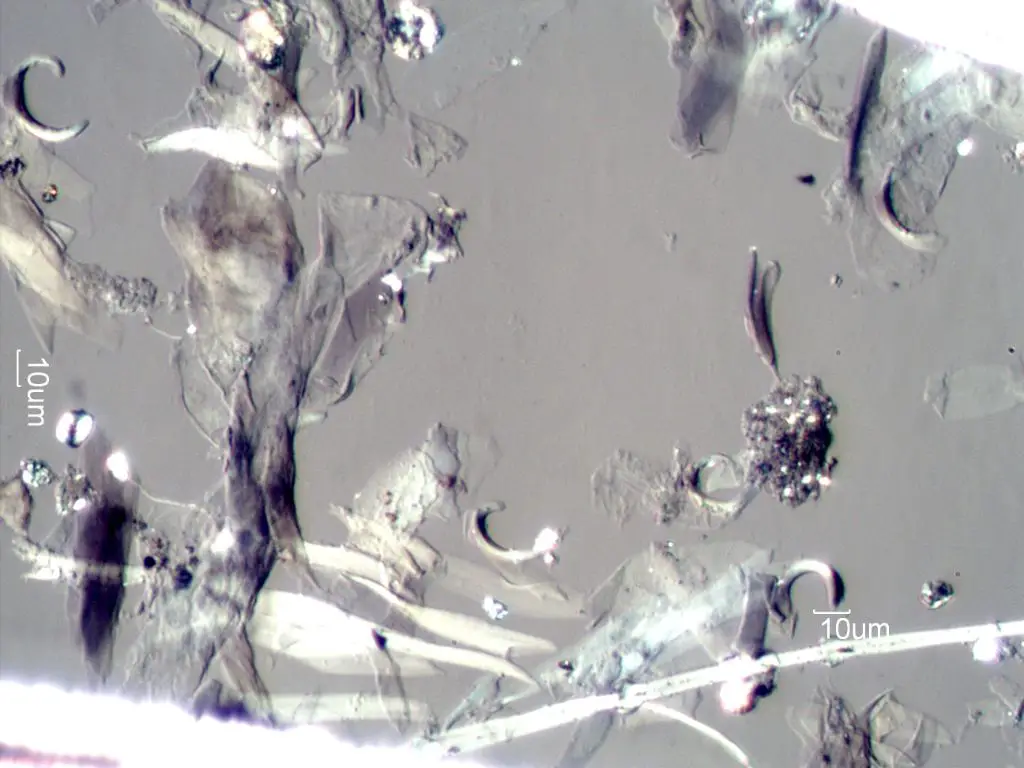What Causes Cat Allergies
Cat allergies are caused by an overreaction of the immune system to specific proteins found in cat dander (skin flakes), saliva, or urine (1). The major allergen is a protein called Fel d 1, which is produced in cats’ sebaceous glands and spread through shedding fur (2). When someone with a cat allergy comes into contact with these proteins, their immune system mistakenly identifies them as harmful and releases IgE antibodies to attack them. This triggers the release of histamines and other chemicals that cause allergy symptoms.

Additionally, the Fel d 1 protein is extremely lightweight and sticky, meaning it can remain airborne for long periods and easily attach to clothing, furniture, and other surfaces. This contributes to increased exposure and sensitivity in people with cat allergies.
Symptoms of Cat Allergies
The most common symptoms of cat allergies include:
- Sneezing – Cat allergens can irritate the nose and trigger sneezing fits.
- Runny nose – Exposure to cats can cause a runny nose due to inflammation in the nasal passages.
- Itchy eyes – Cat dander that comes into contact with the eyes can result in red, watery, itchy eyes.
According to the Mayo Clinic, other symptoms include coughing, chest tightness, shortness of breath, and wheezing which are signs of asthma.
Symptoms usually start within minutes to hours after exposure to a cat and can last for weeks after exposure. Reaction severity depends on the individual’s sensitivity.
Can Cat Allergies Go Away Over Time
Cat allergies are caused by a protein called Fel d 1 that is present in cats’ skin, saliva, and urine. Exposure to Fel d 1 triggers an immune response and release of histamine, leading to allergy symptoms like sneezing, itchy eyes, and skin irritation. So can these unpleasant allergies fade over time? Unfortunately, the answer depends on the individual.

For some people, cat allergies may diminish with prolonged exposure as they build up tolerance. According to research, around 15 to 30 percent of individuals develop a natural tolerance over 2 to 10 years of cat ownership. However, experts caution that there’s no guarantee, and allergies could worsen or persist at the same severity.
Others experience no improvement whatsoever despite ongoing contact with cats. Their immune systems remain overly reactive to Fel d 1, and allergy symptoms never subside. So while occasional natural resolution is possible, cat allergies generally persist long-term without proactive treatment in most affected individuals.
Developing a Tolerance
Some people may naturally develop a tolerance to cat allergens over time with repeated low-level exposure. When you are repeatedly exposed to small amounts of the allergen, your immune system can gradually build up antibodies and become less sensitive. However, this natural tolerance development occurs in only about 10-20% of people with cat allergies. For most, cat allergy symptoms do not go away on their own even with continued exposure [1]. It often takes months or years for this tolerance to develop, if it happens at all. The tolerance is also not always permanent and symptoms may return after time away from cat exposure.
Allergy Shots
One potential treatment for cat allergies is allergy shots, also known as allergen immunotherapy. As described by Mayo Clinic, allergy shots work by exposing the patient to very small doses of the allergen, in this case cat dander or saliva, over time to build up a tolerance (https://www.mayoclinic.org/diseases-conditions/pet-allergy/diagnosis-treatment/drc-20352198).

The process starts with an extremely small dose of the allergen. The dose is gradually increased over several months to years. This gradual increase in exposure allows the immune system to develop a tolerance to the allergen. Eventually, the immune system stops overreacting and causing allergy symptoms when exposed to cats.
Studies show allergy shots can lead to long-term reduction in symptoms and less need for medication in people with cat allergies. However, the shots are a big commitment, requiring weekly visits to the allergist’s office for up to 3-5 years (https://www.nih.gov/news-events/nih-research-matters/experimental-cat-allergy-shots-provide-longer-lasting-relief).
Avoidance
One of the most effective ways to manage cat allergies is to avoid exposure to cat allergens as much as possible. This usually involves keeping cats out of certain rooms, especially bedrooms. According to the American College of Allergy, Asthma & Immunology (ACAAI), cat allergens can remain airborne for long periods and stick to surfaces like carpet, furniture, curtains, and clothing (ACAAI). Keeping cats completely out of bedrooms and limiting them to only a few rooms can significantly reduce allergen levels in the rest of the home.
ACAAI recommends designating a “pet zone” where cats are allowed and keeping them out of all other areas with physical barriers like closed doors or baby gates. Frequently washing bedding on hot settings and removing carpets can also help reduce allergens in bedrooms. While it takes commitment and vigilance, avoiding close contact with cats and the rooms they frequent most is an effective way to reduce allergy symptoms without having to remove pets from a household.
Medications
Antihistamines like fexofenadine (Allegra), loratadine (Claritin), and cetirizine (Zyrtec) are commonly used over-the-counter medications to help relieve allergy symptoms from cats (Mayo Clinic). Antihistamines block the effects of histamine, which is released by the immune system in response to allergens. This can help reduce allergy symptoms like sneezing, itchy and watery eyes, and runny nose. Some popular OTC antihistamine options include:
- Loratadine (Claritin) – blocks H1 histamine receptors, lasts 24 hours
- Cetirizine (Zyrtec) – blocks H1 receptors, lasts 24 hours
- Fexofenadine (Allegra) – blocks H1 receptors, lasts 12-24 hours
Decongestants like pseudoephedrine can also provide relief by constricting blood vessels in the nasal passages, reducing swelling and congestion. However, decongestants should typically only be used for short periods of time as they can cause side effects like increased blood pressure and insomnia.
Consult with your doctor or pharmacist to determine the best allergy medication regimen for your specific symptoms. Some medications can cause drowsiness, so be cautious when driving or operating heavy machinery.
Air Purifiers
Using an air purifier can be an effective way to reduce cat allergen levels in your home. Air purifiers with High Efficiency Particulate Air (HEPA) filters are best for capturing cat dander and other allergens like pollen or dust mites. According to the Blueair and Dyson blogs, HEPA filters are able to remove 99.97% of particles 0.3 microns in size, including cat allergens. By continuously circulating and filtering the air, HEPA air purifiers significantly reduce the amount of allergens in the environment over time.

Studies show using a HEPA air purifier can reduce cat allergen levels by 61% or more. The key is to use an appropriately sized unit for the room and run it continuously. Portable air purifiers are ideal for bedrooms, while larger models can filter air throughout an open concept home. This can provide relief to those with cat allergies and allow them to better tolerate being around feline companions.
Bathing Cats
Bathing cats can help reduce allergens like dander that cause allergic reactions. Studies have found that washing cats with a mild soap or cat shampoo can decrease levels of the allergen Fel d 1 by up to 84% (https://allerpet.com/cleansing-and-bathing/). However, the effects are short-lived and cats would need to be bathed frequently to maintain lower allergen levels. One study found that washing cats twice a week significantly reduced allergens compared to washing every 2-3 weeks (https://health.mountsinai.org/blog/indoor-allergies-should-i-bathe-my-cat/).
Frequent bathing is stressful for most cats and disrupts the oils in their skin and coat. Therefore, bathing cats is generally not recommended as an effective long-term solution for managing cat allergies. It may provide temporary relief of symptoms if done properly and infrequently. But other methods like medications, air filters, and keeping cats out of bedrooms may be better options for controlling cat allergen exposure.
When to See an Allergist
If your cat allergy symptoms are severe or persistent, it’s important to seek help from an allergist. An allergist is a doctor who specializes in diagnosing and treating allergies. According to the Mayo Clinic, seeing an allergist is recommended if your allergy symptoms don’t improve with over-the-counter medications, if the symptoms interfere with your daily life, or if you experience asthma symptoms along with the allergy.
The allergist can perform diagnostic tests like skin prick testing or blood tests to confirm a cat allergy. They can also determine if you’re allergic to cat dander specifically or also environmental allergens that may be exacerbating your symptoms. Once properly diagnosed, the allergist can provide you with treatment options like allergy shots, medications, or avoidance recommendations tailored to your specific allergy triggers and severity of symptoms.
Don’t try to self-diagnose or treat a severe, persistent cat allergy on your own. See an allergist for proper diagnosis and treatment advice. Catching and managing cat allergies early can help prevent complications like asthma from developing down the road.

